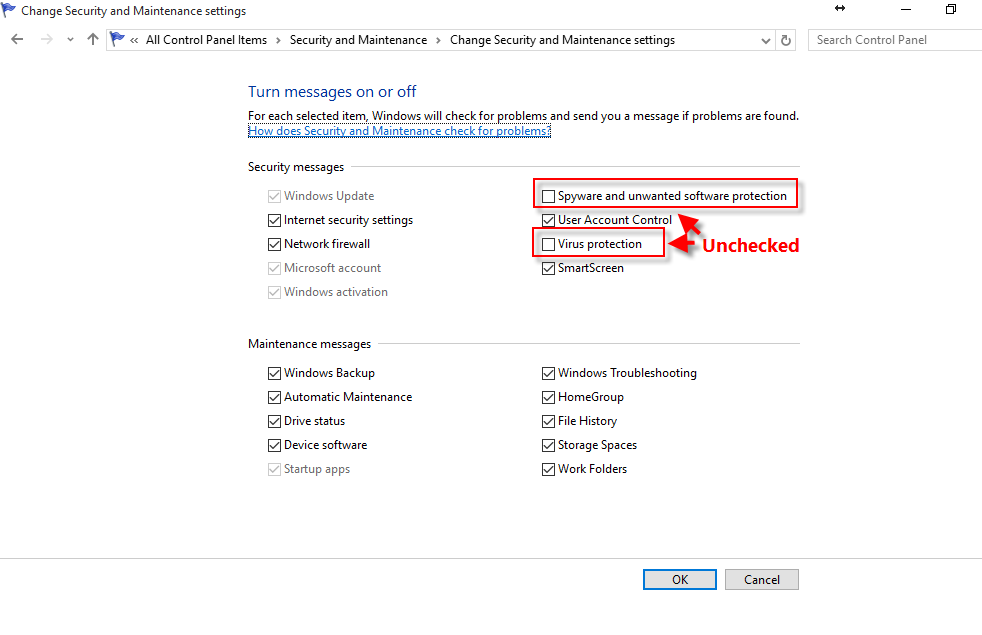

- #AVAST ERROR MESSAGE THE AAVM SUBSYSTEM DETECTED A RPC ERROR SOFTWARE#
- #AVAST ERROR MESSAGE THE AAVM SUBSYSTEM DETECTED A RPC ERROR CODE#
No connection could be made because the target machine actively refused it.
#AVAST ERROR MESSAGE THE AAVM SUBSYSTEM DETECTED A RPC ERROR SOFTWARE#
calling connect a second time on a non-blocking socket that is already connecting, or canceling an asynchronous request (WSAAsyncGetXbyY) that has already been canceled or completed.Īn established connection was aborted by the software in your host machine, possibly due to a data transmission timeout or protocol error. in sendto.Īn operation was attempted on a non-blocking socket that already had an operation in progress - i.e. This error will be returned if an incorrect protocol is explicitly requested in the socket call, or if an address of the wrong family is used for a socket, e.g. AF_INET for Internet Protocols) and a generic protocol type (i.e.

All sockets are created with an associated "address family" (i.e. address or port 0).Īddress family not supported by protocol family.Īn address incompatible with the requested protocol was used. This can also result from connect, sendto, WSAConnect, WSAJoinLeaf, or WSASendTo when the remote address or port is not valid for a remote machine (e.g. Normally results from an attempt to bind to an address that is not valid for the local machine. The requested address is not valid in its context. When bind is called with a wild-card address (involving ADDR_ANY), a WSAEADDRINUSE error could be delayed until the specific address is "committed." This could happen with a call to other function later, including connect, listen, WSAConnect or WSAJoinLeaf. Client applications usually need not call bind at all - connect will choose an unused port automatically. For server applications that need to bind multiple sockets to the same port number, consider using setsockopt(SO_REUSEADDR). This error occurs if an application attempts to bind a socket to an IP address/port that has already been used for an existing socket, or a socket that wasn't closed properly, or one that is still in the process of closing. Only one usage of each socket address (protocol/IP address/port) is normally permitted. An example is using a broadcast address for sendto without broadcast permission being set using setsockopt(SO_BROADCAST). Some error codes defined in WINSOCK2.H are not returned from any function - these have not been listed here.Īn attempt was made to access a socket in a way forbidden by its access permissions. Errors are listed in alphabetical order by error macro.
#AVAST ERROR MESSAGE THE AAVM SUBSYSTEM DETECTED A RPC ERROR CODE#
The invalid hashes could indicate a potential disk device error.Ħ410(F): Code integrity determined that a file does not meet the security requirements to load into a process.The following is a list of possible error codes returned by the WSAGetLastError call, along with their extended explanations. The file could be improperly signed without page hashes or corrupt due to unauthorized modification. The file could be corrupt due to unauthorized modification or the invalid hash could indicate a potential disk device error.ĥ056(S): A cryptographic self-test was performed.ĥ062(S): A kernel-mode cryptographic self-test was performed.ĥ057(F): A cryptographic primitive operation failed.Ħ281(F): Code Integrity determined that the page hashes of an image file are not valid. The main reason why we recommend Failure auditing for this subcategory is to be able to get Code Integrity failure events.Ĥ612(S): Internal resources allocated for the queuing of audit messages have been exhausted, leading to the loss of some audits.Ĥ618(S): A monitored security event pattern has occurred.Ĥ816(S): RPC detected an integrity violation while decrypting an incoming message.ĥ038(F): Code integrity determined that the image hash of a file is not valid. However, if you are planning to manually invoke “ 4618(S): A monitored security event pattern has occurred”, then you also need to enable Success auditing for this subcategory.

The main reason why we recommend Success auditing for this subcategory is to be able to get RPC integrity violation errors and auditing subsystem errors (event 4612). Violations of security subsystem integrity are critical and could indicate a potential security attack. Audit System Integrity determines whether the operating system audits events that violate the integrity of the security subsystem.Īctivities that violate the integrity of the security subsystem include the following:Īudited events are lost due to a failure of the auditing system.Ī process uses an invalid local procedure call (LPC) port in an attempt to impersonate a client, reply to a client address space, read to a client address space, or write from a client address space.Ī remote procedure call (RPC) integrity violation is detected.Ī code integrity violation with an invalid hash value of an executable file is detected.


 0 kommentar(er)
0 kommentar(er)
